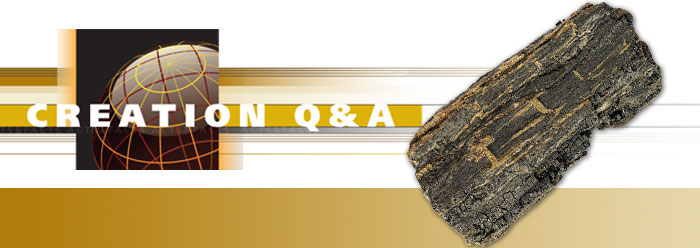The presence of carbon-14 (C-14) in specimens that are supposedly millions of years old is a serious problem for believers in an old earth. C-14 is a radioactive variety or “isotope” of carbon that eventually decays into nitrogen. Because this occurs relatively quickly, no C-14 should be detected in any specimen that is more than about 100,000 years old.1 The fact that C-14 has long been detected in coal, oil, fossilized wood, and natural gas samples is genuinely surprising to those who believe these samples to be millions of years old. By evolutionary reckoning, such samples should be radiocarbon “dead.”2
Evolutionists were initially able to dismiss these results because of a source of error in the earlier “scintillation” method of detecting C-14. However, a newer technique, acceleration mass spectrometry (AMS), is not subject to this error.
Yet when secular researchers tested supposedly very “ancient” organic specimens with the newer AMS method, C-14 was still present! The number of specimens tested with the AMS method is relatively small, as it is considerably more expensive to process samples than with the earlier technique. Nevertheless, scores of instances of “anomalous” AMS detection of C-14 have been reported in the secular literature, including around 70 within just a 14-year period.3
ICR’s RATE4 creation research project confirmed these earlier results: 10 high-quality coal samples obtained from the U.S. Department of Energy were submitted for testing to one of the world’s most reliable radiocarbon laboratories. C-14 was detected in all 10 samples. The RATE researchers even found preliminary evidence of C-14 in diamond, which is supposedly 1 to 3 billion years old!
Naturally, skeptics have tried to dismissed these findings, generally claiming that they are the result of contamination that occurred either during the laboratory procedures used to measure the C-14 or in situ (in the soil or rock where the specimen was originally found).
However, C-14 lab technicians take great pains to reduce or eliminate sources of contamination. They know very well that any contamination may likely ruin the test results, and their frequent cross-checks virtually ensure that they only measure carbon integral to the sample. Also, any C-14 that could inadvertently be introduced to a sample during the measurement process will be negligible compared to the C-14 already present, provided that sufficiently large sample sizes (about 100 mg) are used, which is usually the case.
What about in situ contamination? While in situ contamination can sometimes occur, are we to believe that all the “anomalous” C-14 detected by the AMS method is the result of contamination? At some point, the contamination excuse begins to wear thin. Furthermore, contamination should not be assumed without good cause to suspect that it has occurred—and a test result that simply contradicts long-age dogma does not provide enough scientific reason to make such an assumption!
Skeptics may object that the number of reported instances of “anomalous” AMS C-14 detection is too small to justify questioning the iconic long-age timescale. We disagree, but we encourage these skeptics to submit additional dinosaur bones, fossilized wood, coal, and diamond for further AMS testing. We are confident that additional testing will only strengthen the case for a biblically consistent age of the earth.
References
- Hebert, J. 2013. Rethinking Carbon-14 Dating: What Does It Really Tell Us about the Age of the Earth? Acts & Facts. 42 (4): 12-14.
- Baumgardner, J. 2005. Carbon-14 Evidence for a Recent Global Flood and a Young Earth. In Radioisotopes and the Age of the Earth: Results of a Young-Earth Creationist Research Initiative. Vardiman, L., A. A. Snelling, and E. F. Chaffin, eds. San Diego, CA: Institute for Creation Research and Chino Valley, AZ: Creation Research Society, 587-630.
- Giem, P. 2001. Carbon-14 Content of Fossil Carbon. Origins. 51: 6-30.
- Radioisotopes and the Age of the Earth. See www.icr.org/rate.
* Dr. Hebert is Research Associate at the Institute for Creation Research and received his Ph.D. in Physics from the University of Texas at Dallas.
Cite this article: Hebert, J. 2013. Do Young C-14 Results Reflect Contamination? Acts & Facts. 42 (7): 20.




















